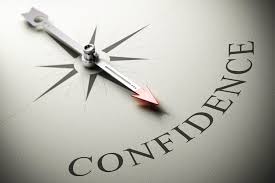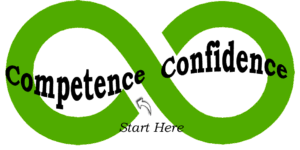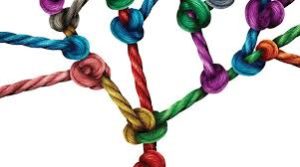By Maureen Breeze with Annette Watkins
Transition as a life-long process

We’ve all endured transitions. It’s part of growing up. Changes in our bodies, new schools, painful breakups, and first jobs.
Looking back, it’s clear that the person we became as the result of the transition was markedly different than the person we were before the transition.
There is however a difference between change and transition. The fundamental difference is that change is situational, whilst transition is psychological.
Many believe that once adulthood is reached, the cyclical process of emotional and psychological growth and development is over. However, research shows that adults continue to transition over the course of life. In their book Immunity to Change, authors Robert Kegan and Lisa Laskow Lahey explore the role transition continues to play in adult development. They conclude that the way we see ourselves, engage with the world around us, and make meaning of life evolves as we move through specific transitions throughout adulthood.
It’s common to make tactical changes in our lives. When something no longer works or satisfies us, we might switch jobs, engage in new social circles and learn new hobbies. But there are times those these external changes fail to quell a nagging voice that tells you, “These shoes no longer fit.” The changes we make may alter circumstances, but don’t address underlying issues. This is when we know that we need more than a change and that a transition is in order. Such transitions involve a deeper shift in both what we do and how we do it, and more importantly, they center on who we are and hope to become.
Initiators of Transition
 Transitions can be spurred by many things including marriage and divorce, a loss of a job, the desire for a new career, boredom, health issues, financial events, the birth of children, a death, or an empty nest. Sometimes the need for transition comes after great accomplishments. Other times, the call for transition comes from a quiet, almost inaudible voice.
Transitions can be spurred by many things including marriage and divorce, a loss of a job, the desire for a new career, boredom, health issues, financial events, the birth of children, a death, or an empty nest. Sometimes the need for transition comes after great accomplishments. Other times, the call for transition comes from a quiet, almost inaudible voice.
When talking to prospective parents at a college, I heard a student tour guide explain the benefits of attending his small institution. “It’s a great opportunity to really get to know the professors and build deep relationships in a tight knit community. By the time you’re a senior, though, it can feel small. But that’s okay. It’s supposed to be that way. It’s time to move on.”
Time to move on. It’s at the heart of transition.
The Role Our Values Play in Transition
Whether triggered by a jarring external event or a subtle internal spur, transitions involve similar elements. First, they call for an exploration of our values to guide our decisions. What is important to us? Why is it relevant? How do these values present themselves in our daily lives?
An exploration of our values requires close examination of our changing relationship to them as well. Values help us make meaning of our world and give purpose to our lives, and when circumstances change, our relationship to certain values may shift as well. What was once of upmost importance, now may be less so. And what once might have been a prime driver in life may move to the back burner for a period of time. The process calls us to examine our values and prioritize them as we step into our next chapter.
 Ultimately transition involves choices that when made consciously can impact how life unfolds through challenging and ambiguous times. In his novel, A Gentleman in Moscow, Amor Towles writes about Count Alexander Rostov, an aristocrat placed under house arrest in a Moscow hotel. The book explores this character’s journey of transition and transformation as he works to “master his circumstances lest they master him.” Inquisition, curiosity and a shift in mindset allowed him to adapt to his new surroundings and experience richness in life that might have been unknown to him without the transition.
Ultimately transition involves choices that when made consciously can impact how life unfolds through challenging and ambiguous times. In his novel, A Gentleman in Moscow, Amor Towles writes about Count Alexander Rostov, an aristocrat placed under house arrest in a Moscow hotel. The book explores this character’s journey of transition and transformation as he works to “master his circumstances lest they master him.” Inquisition, curiosity and a shift in mindset allowed him to adapt to his new surroundings and experience richness in life that might have been unknown to him without the transition.
It’s through transitions and learning to master circumstances that opportunities abound to explore who you are (mindsets, beliefs, attitudes, personalities and curiosities), what you can do (personal mission and sense of purpose), and how you choose to express your identity and chosen path.
To learn more about this exploration process, join us for a Retreat, Reinvent and Recharge workshop by emailing me at maureenbreeze@cultivage.com.
Stay tuned for more on the topic of transition as our next blog explores how you can cultivate a vision for transition and transformation, and strategies for creating blueprint goals for foundational change.




 As a result, the equation confidence = competence has taken root. By developing competencies and mastering skills, confidence and improved self-esteem should follow.
As a result, the equation confidence = competence has taken root. By developing competencies and mastering skills, confidence and improved self-esteem should follow. Think about a time you were curious about something. What feelings or reactions did you experience in this curiosity state? Was it a sense of wonder? A desire to learn more? A nudge to look more closely?
Think about a time you were curious about something. What feelings or reactions did you experience in this curiosity state? Was it a sense of wonder? A desire to learn more? A nudge to look more closely?


